Best Coffee Grinders for Cold Brew
To make great cold brew, the most important tool is your coffee grinder. It is more important than the beans, water, or the brewer itself. The right grinder makes a smooth and rich coffee without any bitterness.
Cold brew is made by soaking coffee grounds in cool water for 12 to 24 hours. This slow process is easy to do. But it requires a very specific coffee grind to taste good.
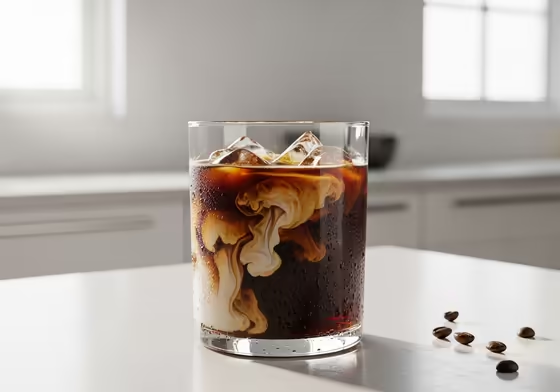
The main problem is getting the grind size just right. If your grinder creates a mix of big chunks and fine dust, your coffee will have problems. The big chunks won't brew enough, making the coffee taste weak or sour.
At the same time, the fine dust will brew too much. This releases bitter flavors and makes the bottom of your cup sludgy. This guide will help you find a grinder that gives you the perfect coarse grind every time.
What is a Coarse Grind for Cold Brew?
Before choosing a grinder, you need to know what you're aiming for. A "coarse grind" sounds simple, but getting it right is key. Here's what the perfect grind for cold brew looks like.
What is the best grind size for cold brew?
For cold brew, you want an extra coarse grind. This is usually the chunkiest setting on any coffee grinder. It's much larger than what you'd use for a drip coffee machine.
To get an idea of the size, think about things in your kitchen. The coffee grounds should look like coarsely ground peppercorns or rock salt. They can also look like chunky breadcrumbs.
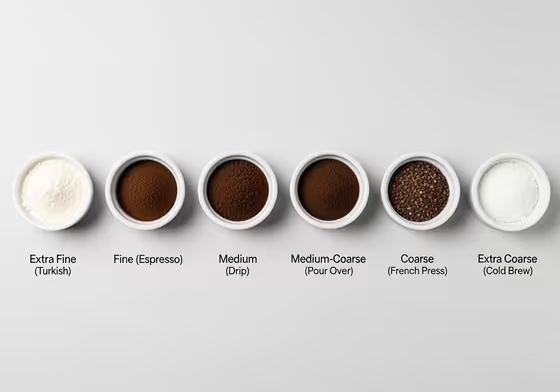
This is even coarser than what you need for a French Press. A French Press uses a "coarse" grind, but cold brew needs an "extra coarse" grind.
Why is an extra coarse grind so important?
The large particle size is important for two main reasons. It helps control the flavor and makes filtering easy.
- Controlling Flavor: Cold water doesn't pull flavor from coffee as fast as hot water. To make up for this, cold brew soaks for a long time. The extra coarse grind slows down this process so the coffee doesn't become bitter.
- Easy Filtering: The large grounds also reduce the amount of sludge or silt in your brew. This makes it easier to filter the coffee at the end. The result is a much cleaner and clearer drink.
What happens if the grind is too coarse?
While you want a coarse grind, it is possible to go too big. If the coffee chunks are too large, the water can't pull out enough flavor in 24 hours.
The coffee will taste weak, watery, and flat. It might also have a sour taste. This happens when the coffee is "under-extracted," meaning the good flavors were left behind.
What happens if the grind is too fine?
This is the most common mistake when making cold brew at home. Using a grind meant for a drip machine will ruin your batch.
The coffee will be very bitter and harsh. Because the grounds are so small, the long soak time pulls out all the bad-tasting stuff. It also creates a lot of sludge that clogs filters and makes the coffee taste muddy.
This is why a good grinder is so important. A cheap blade grinder gives you both big chunks and fine powder. This means your coffee will be both sour and bitter, with no clear flavor.
What grind does Starbucks use for cold brew?
Many people ask this since Starbucks made cold brew so popular. They use the coarsest setting on their grinders, which is labeled for French Press. Their at-home guides also suggest using a coarse grind for making cold brew.
Cold Brew Grind Size Guide
This table compares different grind sizes so you can see the difference.
| Grind Size | Visual Comparison | Best Brewing Method(s) |
|---|---|---|
| Extra Fine | Powdered Sugar, Flour | Turkish Coffee |
| Fine | Table Salt | Espresso, Moka Pot |
| Medium | Regular Sand, Cornmeal | Drip Coffee, Siphon |
| Medium-Coarse | Rough Sand | Chemex, Pour Over |
| Coarse | Kosher Salt, Breadcrumbs | French Press, Percolator |
| Extra Coarse | Rock Salt, Coarse Peppercorns | Cold Brew (Immersion) |
How to Pick a Grinder for Cold Brew
Now that you know the target is a consistent, extra-coarse grind, we can look at the tools. The type of grinder you use is the most important factor in getting good results.
Burr Grinders vs. Blade Grinders
This is the biggest choice you'll make. The answer is simple: you need a burr grinder.
A blade grinder works like a blender with a spinning blade that chops the coffee beans. The grind size depends on how long you hold the button down. This creates a messy mix of powder and big chunks, which is the worst thing for cold brew.
A burr grinder works differently. It uses two rough surfaces, called burrs, to crush the beans to a uniform size. The size is set by how far apart the burrs are, which gives you precise control.
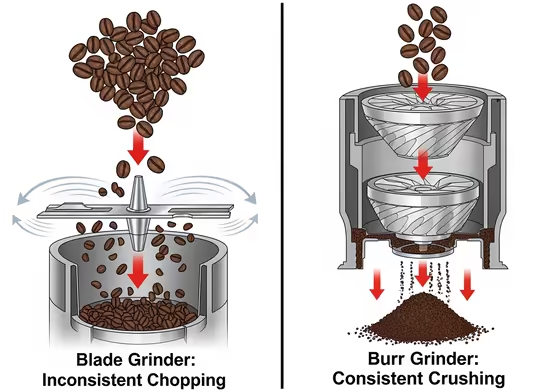
Grinder Technology Comparison
This table shows why burr grinders are better for cold brew.
| Feature | Blade Grinder | Burr Grinder |
|---|---|---|
| How it Works | A spinning blade chops beans | Two burrs crush beans |
| Grind Consistency | Very Inconsistent (Dust & Chunks) | Very Consistent (Uniform Size) |
| Grind Control | By time (just guessing) | By distance (very precise) |
| Heat | High (can burn beans) | Minimal (low-speed) |
| Price | Cheap ($) | More expensive ($$-$$$) |
| Good for Cold Brew? | Not Recommended (makes bitter coffee) | Essential (for clean, balanced taste) |
Conical vs. Flat Burrs
To get more specific, burr grinders come in two types: conical and flat. Flat burrs create very uniform grounds, which is great for espresso. They can be more expensive.
Conical burrs create grounds that are mostly one size, with a few smaller particles mixed in. This might sound less ideal, but it's not like the mess from a blade grinder. The particle size is still very controlled.
For cold brew, a good conical burr grinder is perfect. It gives you enough consistency to avoid bitterness. These grinders also run cooler and cost less.
What People Online Recommend
When you look at coffee forums online, a few grinders are always recommended for cold brew.
- The Go-To Pick: The Baratza Encore is the top recommendation for a quality burr grinder that doesn't break the bank. It's known as the best place to start.
- The Budget Pick: The OXO Brew Conical Burr Grinder is often suggested as the best affordable electric grinder. You can usually find it for under $100.
- The Best Value: Many people say a high-quality manual (hand) grinder gives you the best results for your money. It provides better grind quality than cheap electric models.
- The Upgrade: If you have more to spend, people suggest the Baratza Virtuoso+ or the Fellow Ode. These grinders are a step up in performance.
The Problem with Coarse Settings
Sometimes, even good grinders struggle with their coarsest settings. When the burrs are set very far apart, they can wobble a bit. This wobble allows different-sized particles to slip through.
So, the grinder can actually be less consistent on its coarsest setting. The best grinders are built to be stable, which reduces this wobble. That's why grinders like the Baratza Encore and Fellow Ode are great for cold brew.
Our Top Grinder Picks for Cold Brew
Based on grind consistency, design, and what other coffee lovers say, here are our top picks. These grinders will help you make perfect cold brew.
Best Overall Cold Brew Grinders
This category hits the sweet spot between price and performance. These grinders are a great value for the long run.
1. Baratza Encore
- Why it's the Best: The Encore is the industry standard for home brewers. It's built to last and provides a consistent grind. Best of all, it's repairable, so it's a long-term investment.
- Cold Brew Performance: The Encore has 40 settings. For cold brew, you should use a setting between 24 and 40. Many coffee experts suggest using the coarsest setting (40) for the best results.
- Price: Around $150–$170.
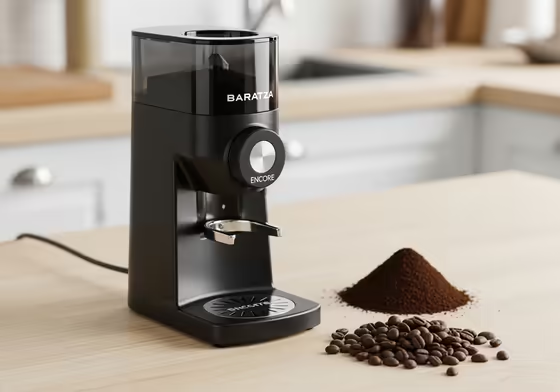
2. OXO Brew Conical Burr Coffee Grinder
- Why it's a Top Pick: The OXO grinder is a user-friendly and affordable alternative to the Encore. It delivers great results for its price, which is often under $100. It also has a simple timer that remembers your last setting.
- Cold Brew Performance: The OXO has 15 main settings. For cold brew, use settings 11 to 15. Most users find that the coarsest setting (15) works perfectly.
- Price: Around $100.
Head-to-Head: Baratza Encore vs. OXO Brew
This table compares our two "Best Overall" picks to help you decide.
| Feature | Baratza Encore | OXO Brew Conical Burr Grinder |
|---|---|---|
| Price | ~$150 - $170 | ~$100 |
| Grind Settings | 40 settings | 15 settings |
| Cold Brew Setting | 24 - 40 | 11 - 15 |
| Build/Durability | Excellent. Built to last and repairable. | Good, but has more plastic parts. |
| Verdict | Best Long-Term Investment | Best Value & User-Friendly Pick |
Best Budget Coffee Grinder for Cold Brew
When you're on a budget, it's easy to fall into a trap. The cheapest electric burr grinders often produce very inconsistent grounds. They create lots of fine dust, which ruins cold brew.
The goal is to find the cheapest grinder that still makes good cold brew. That leads to two different recommendations.
1. Best Budget Electric Grinder: OXO Brew Conical Burr Grinder
- At around $100, the OXO is the lowest-priced electric grinder we can recommend. It gives a consistent enough grind for a great, non-bitter cold brew.
2. Best Budget Overall (Manual): Timemore C2 / C3
- For the best possible grind quality at a low price, you should get a manual grinder. A hand grinder like the Timemore C2 or C3 often costs less than $90. It provides a better grind than even the Baratza Encore.
- These grinders use steel burrs that make a very consistent grind with little dust. The only catch is you have to grind by hand. This can take a few minutes for a big batch of cold brew, but the quality is worth it.
Best Small Burr Coffee Grinder
If you have limited counter space, these compact grinders are great options.
1. Best Small Electric Grinder: Fellow Opus or Fellow Ode Gen 2
- Fellow grinders are designed to look good and save space. They are very quiet compared to other grinders. They are made to be displayed on your counter.
- The Fellow Ode was built specifically for brewed coffee, so it is excellent at coarse grinds. The Fellow Opus is an all-around grinder that is also great for cold brew. The downside is that they are more expensive.
2. Best Small Overall (Manual): 1Zpresso Q-Air / X-Ultra
- Manual grinders are the most compact choice. A grinder from 1Zpresso is one of the best hand grinders you can buy. It performs as well as electric models that cost hundreds more.
- These grinders are made of metal and are easy to adjust. This makes it simple to get a precise, consistent coarse grind for cold brew wherever you are.
Tips for Making Great Cold Brew
Having the right grinder is half the battle. Now you need to use it correctly. Here are some tips on ratios, troubleshooting, and choosing beans.
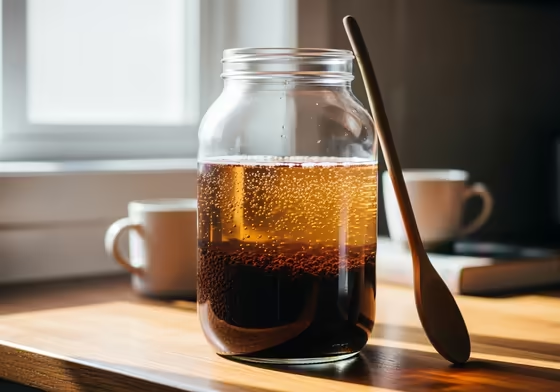
Cold Brew Ratios: Concentrate vs. Ready-to-Drink
You may see different recipes with very different ratios. That's because there are two ways to make cold brew.
Method 1: The Concentrate Method (Recommended)
- Ratio: Use a ratio between 1:5 and 1:8. This means 1 part coffee to 5-8 parts water. For example, use 125g of coffee for 1 liter of water.
- What it is: This creates a strong coffee concentrate. It's not meant to be drunk straight.
- How to serve: Dilute the concentrate with water or milk. A good starting point is one part concentrate to one part water. This method is great because you can control the strength of each drink.
Method 2: The "Ready-to-Drink" Method
- Ratio: Use a ratio between 1:15 and 1:18. This is the normal ratio for a cup of hot coffee.
- What it is: This brew is ready to drink right away over ice. You don't need to add water.
- The Catch: This method takes up more space in your fridge and isn't as flexible.
How to Fix Weak Cold Brew
If your cold brew tastes weak or sour, it's likely under-extracted. You can fix this by adjusting one of these three things.
- Grind Finer: Your grind might be a little too coarse. Try making your grind one or two settings finer. This will help pull more flavor from the beans.
- Extend Steep Time: If you're steeping for 12 hours, try 18. Most experts recommend brewing for 14 to 22 hours. Brewing in the fridge slows things down, so you may need to steep even longer.
- Use More Coffee: If you are using a 1:8 ratio, try a 1:7 ratio. This simply uses more coffee for the same amount of water. It will make a stronger concentrate.
Common Cold Brew Mistakes
- Grinding Too Fine: This is the biggest mistake. Using pre-ground coffee or a drip setting will make your brew bitter and sludgy.
- Wrong Steeping Time: Steeping for less than 12 hours can make your coffee weak and sour. Steeping for more than 24 hours can make it taste woody and bitter.
- Using Stale Beans: Cold brew needs fresh beans to taste good. Pre-ground or old coffee has already lost its best flavors. Always grind your coffee right before you brew.
- Not Diluting Concentrate: Many people make a concentrate and are shocked by how strong it is. Remember to add water or milk to your taste.
- Poor Filtering: Don't squeeze the grounds to get the liquid out faster. This will push fine particles into your coffee. For a super clean cup, you can filter it a second time through a paper filter.
What Coffee Beans Are Best for Cold Brew?
The best bean is up to you, but the cold brew process changes how coffee tastes.
The "Classic" Profile (Medium to Dark Roasts)
- Why it works: Dark and medium roasts are great for cold brew. Cold water is good at pulling out chocolate and nutty flavors. It is bad at pulling out acidity.
- Result: This makes dark roasts taste very smooth and sweet. You get none of the bitterness that sometimes comes with hot-brewed dark roasts.
- Good Origins: Try beans from Brazil, Colombia, or Sumatra for these classic flavors.
The "Modern" Profile (Light Roasts)
- Why it works: Many people avoid light roasts for cold brew, fearing they will taste sour. But this is a missed opportunity.
- Result: Cold brewing softens the sharp acidity of a light roast. This lets the delicate fruity and floral notes come through. A cold-brewed light roast can be surprisingly sweet and complex.
- Good Origins: This method is perfect for beans from Ethiopia or Kenya. You'll often get a smooth, sweet coffee with berry-like flavors.